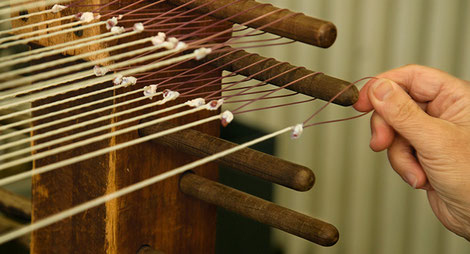How to Choose Strings For Your Violin Or Fiddle OR viola or cello?
Now that you've practiced and practiced, you might be noticing that your strings are starting to sound false, or not in tune. Or, perhaps they are starting to unravel or sound "dull." If you have a fiddle contest or performance coming up, you should try to change your strings a week or two ahead of time to allow them to stretch and reach their full potential. How do you determine which strings to choose? There are numerous strings on the market at various price points.
There are three main types of strings for violin, viola und cello
Steel strings FOR VIOLIN, VIOLA UND CELLO

These do not stretch much and can break in very quickly. They are usually the least expensive option. They can be difficult to tune because the core of the string is steel and is very sensitive to small changes in tension. It is a very good idea to have four fine tuners on your tailpiece if you choose to use the steel core variety.
Steel strings for violin can give a bright and edgy sound, with the exception of twisted brands, such as Helicore byD'Addario and CHROMCOR by Pirastro, which have a dark and warm sound.
There are some great imports as well, such as Thomastik Spirocore, Infeld Red & Blue, Jargar and Prim, as Prelude by D'Addario and Supersensitive.
Steel strings for violas can give a bright and edgy sound, with the exception of twisted brands, such as Helicore byD'Addario and Thomastik Spirocore, which have a moderate dark and warm sound. Viola steel strings powerful and bright: CHROMCOR by Pirastro, Larsen, Jargar and Prim.
Steel strings for master Cello can give a bright and edgy sound, with the exception of twisted brands, such as Larsen and Thomastik Spirocore, which have a highly dark and warm sound. Other popular top strings manufacturer steel strings include domestic brand, such as Pirastro.
Synthetic core strings FOR VIOLIN, VIOLA UND CELLO

These are used by most violinists and fiddlers today and are moderately priced. Once they stabilize, thzt756uey are capable of the warmest and richest sound of any string on the market. They are also unaffected by humidity. Thesy allow the musician to play into instrument, can have superb clarity, and allow for dynamic changes and nuances. They are usually available in three gauges -- light (weich), medium (mittel) and heavy (stark). The light gauge variety speak very quickly, have the least resistance and give a darker sound than the other gauges. The medium gauge variety are the standard used by most players. Heavy gauge strings can give a little more volume but tend to be more sluggish which, depending upon the instrument, might not be an advantage.
Top Synthetic core strings manufacturers today is Pirastro with string for violin an viola models: Evah Pirazzi Gold, Obligato, Perpetual, Tonica and Evah Pirazzi.
Some popular brands include Pro Arte by D'Addario, Corelli Crystal and Alliance, Thomastik Dominant, Vision and Larsen IL Cannone.
Gut core strings FOR VIOLIN, VIOLA or CELLO

Gut strings tend to be the most expensive type and have been around since the beginning of the violin. They are made from sheep intestines. Over the years they became known as "cat gut" which is probably derived from the early instruments used in the 1600's, known as pocket violins, citterns or pochettes. These were instruments small enough for musicians to carry around in their pockets. The word "kit" likely arose from an abbreviation of the word "pocket" to "-cket" and consequentially "kit" or perhaps a shortened version of cittern.
Available today are unwound, plain gut strings used mostly by baroque players and a variety wounded with varying metal alloys. Pirastro is a leading manufacturer of gut strings, which include Gold Label, Eudoxa, Oliv and Passione Solo.
The Golden Spiral brand are still a standard used by many violinists in America. Gut strings are affected by temperature and humidity. They are not as stable as the synthetic core variety, and require a lighter touch by the player, since they tend to "collapse" with heavy handed playing. Gut also has a shelf life. Since they are an animal product, they begin to deteriorate over time. They can make fiddle playing difficult given that most fiddle contests are held outside in all sorts of weather conditions.
There is no perfect string for all instruments. If you like the brand that you are accustomed to using, then stick with them. If you feel like experimenting I hope this guide will be helpful. Some violin shops will let you bring your fiddle in and audition different sets. Please keep in mind that this is an expensive proposition for the violin dealer as once the strings have been put on an instrument they can no longer sell them as new. Check with them first and if they are agreeable by all means make an appointment to do so.